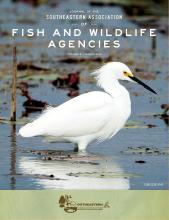Waste Rice and Natural Seed Abundances in Rice Fields in the Louisiana and Texas Coastal Prairies
Rice and natural seeds are important foods for waterfowl in rice growing regions such as the Gulf Coast Prairies of Louisiana and Texas. We conducted a study from August-November 2010 and collected 2,250 soil cores in 50 farmed and 50 idle rice fields in the Louisiana Chenier Plain (CP) and Texas Mid-Coast (TMC) to estimate biomass of waste rice and natural seeds. Estimates are necessary to assess carrying capacity for waterfowl in this region by the Gulf Coast Joint Venture. Waste rice abundance was greatest in CP farmed fields that produced a second crop of rice (i.e., ratoon) and were...
